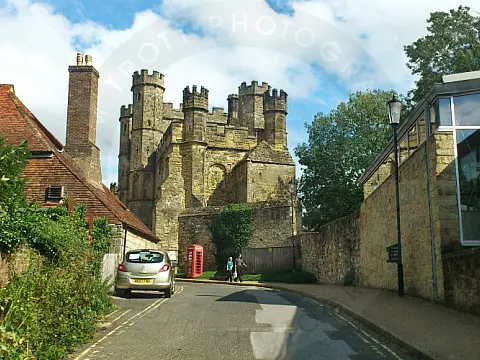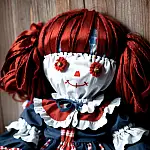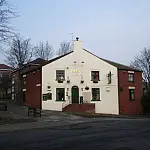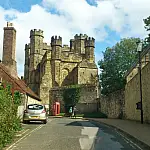The History and Haunting of Bosworth BattlefieldBattle of Bosworth is one of the worst documented battles in history despite Bosworth Battlefield being decisive in the Wars of the Roses.
The Battle of Bosworth was fought on 22 August 1485. The battle was fought between the forces of Richard III, the last Plantagenet King of England, and troops assembled under the banner of Henry Tudor, the Earl of Richmond. It was the decisive battle of the Wars of the Roses. The outcome of the Battle of Bosworth established the Tudor family on the throne of England and set the country on the road to the Renaissance.
It may be said that modern Britain started on that day in 1485 when Richard Plantagenet became the final king of England to die in battle. The Battle of Bosworth is also one of the worst documented battles in the English historical past. No eyewitness accounts of it have survived. Even the precise location where Bosworth Battlefield has become lost over the years.
In February 2010 it was announced that archaeologists had spent five years going over the area. They had used metal detectors and had uncovered cannon balls, sword mounts and badges. They also discovered a small silver badge in the shape of a boar - Richard III's personal emblem. This led them to conclude that they had rediscovered the site of the battle. The exact location remains a secret to deter would-be treasure hunters.
History behind the Battle of Bosworth
Even though Richard III's troops outnumbered those of Henry Tudor, he was reliant on the support of some nobles, and their support was by no means certain. Chief among these were the Stanley brothers, Sir William and Thomas, the Earl of Derby. They had lined their troops up on a nearby ridge overlooking the Bosworth battlefield but were showing an unwillingness to join their king's ranks. There they remained as the battle began.
Richards's loyal supporters, the Duke of Norfolk and Lord Ferrers, were killed early on in the fierce hand-to-hand combat. Worried that without the intervention of the Stanleys, the battle might go against him, Richards's closest surviving supporters begged him to flee the field. Announcing that he would live or die as King of England, Richard refused point-blank to consider retreat. Suddenly, a messenger pointed out a group of horsemen waving aloft the banner of the red dragon, the standard of Henry Tudor, cantering across the plain towards Sir William Stanley.
Realizing that Henry was attempting to enlist the support of the Stanley brothers, Richard leapt onto his horse and, with his household cavalry in tow, charged towards his adversary. He plunged into the enemy ranks with such force that, despite his slight stature, he managed to cut down the immensely strong Sir John Cheney and killed Henry's standard-bearer, William Brandon. However, at that moment, Sir William Stanley threw his support behind Henry and brought his troops into the fray. Now outnumbered and with his men falling around him, Richard fought bravely on. Unhorsed, he raised his sword and made a last desperate attempt to kill Henry, but the combined Tudor and Stanley forces fell upon him, beating him to the ground. 'Treason! Treason!' he screamed, as their weapons smashed through his armour and hacked him to death. Sir William Stanley, so legend claims, then retrieved Richards's crown from beneath a nearby thorn bush and, placing it on Henry Tudor's head, proclaimed him King of England.

Haunting of Bosworth Battlefield
Psychic echoes of the battle and its aftermath have reverberated around the area ever since. Visitors to the Bosworth Battlefield Heritage Centre have encountered ghostly hooded figures and heard the sound of an invisible spirit army marching past them. Mediums have detected numerous spirit energies around the heritage centre, including a peasant woman, a wounded soldier who uses his sword as a crutch, and the headless figure of a soldier who died in the battle. The most illustrious spirit contacted is that of Richard III himself, who repeatedly returns to the vicinity of Bosworth Battlefield, on the anniversary of the battle when he became the last King of England to die in battle.











